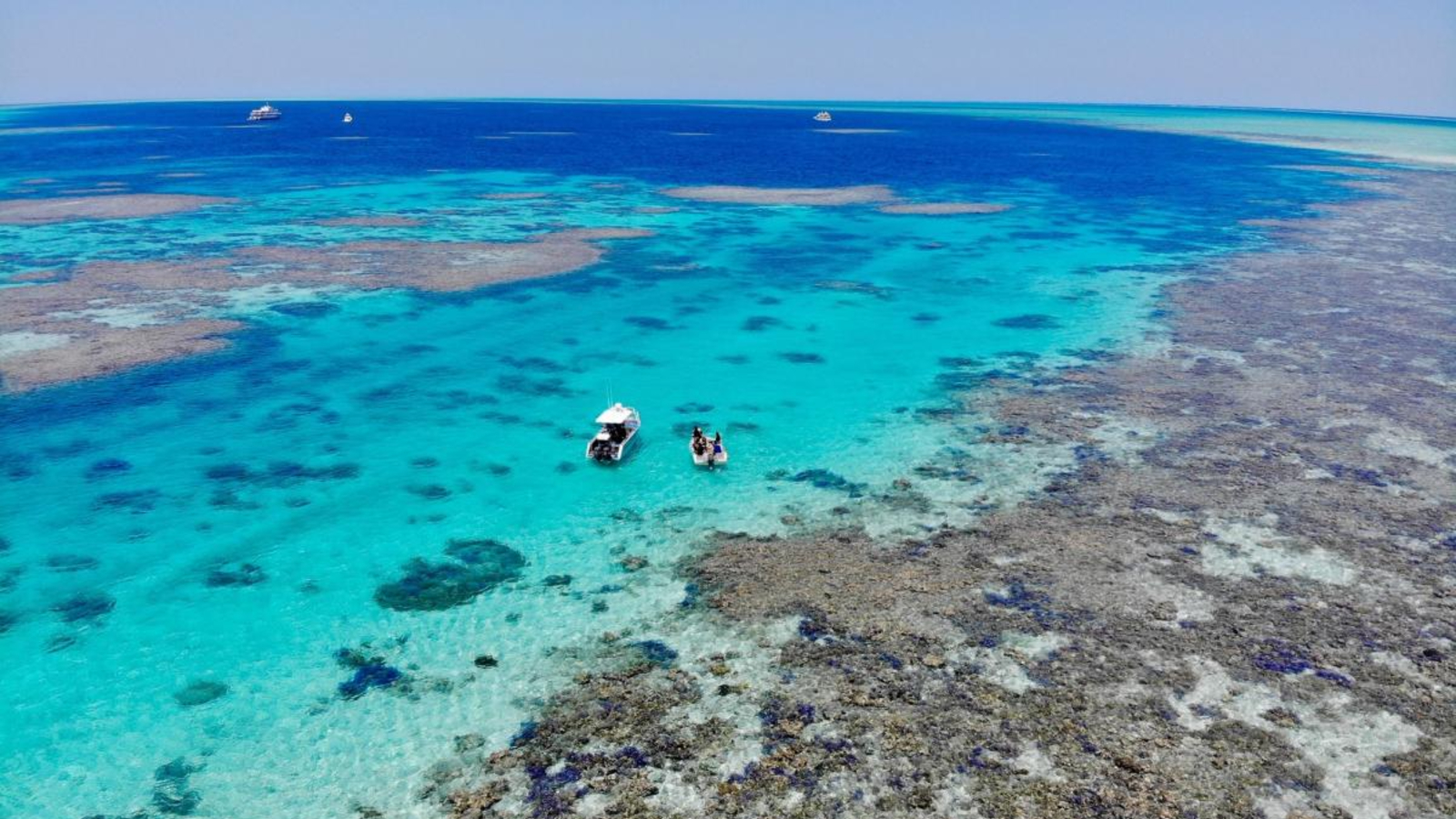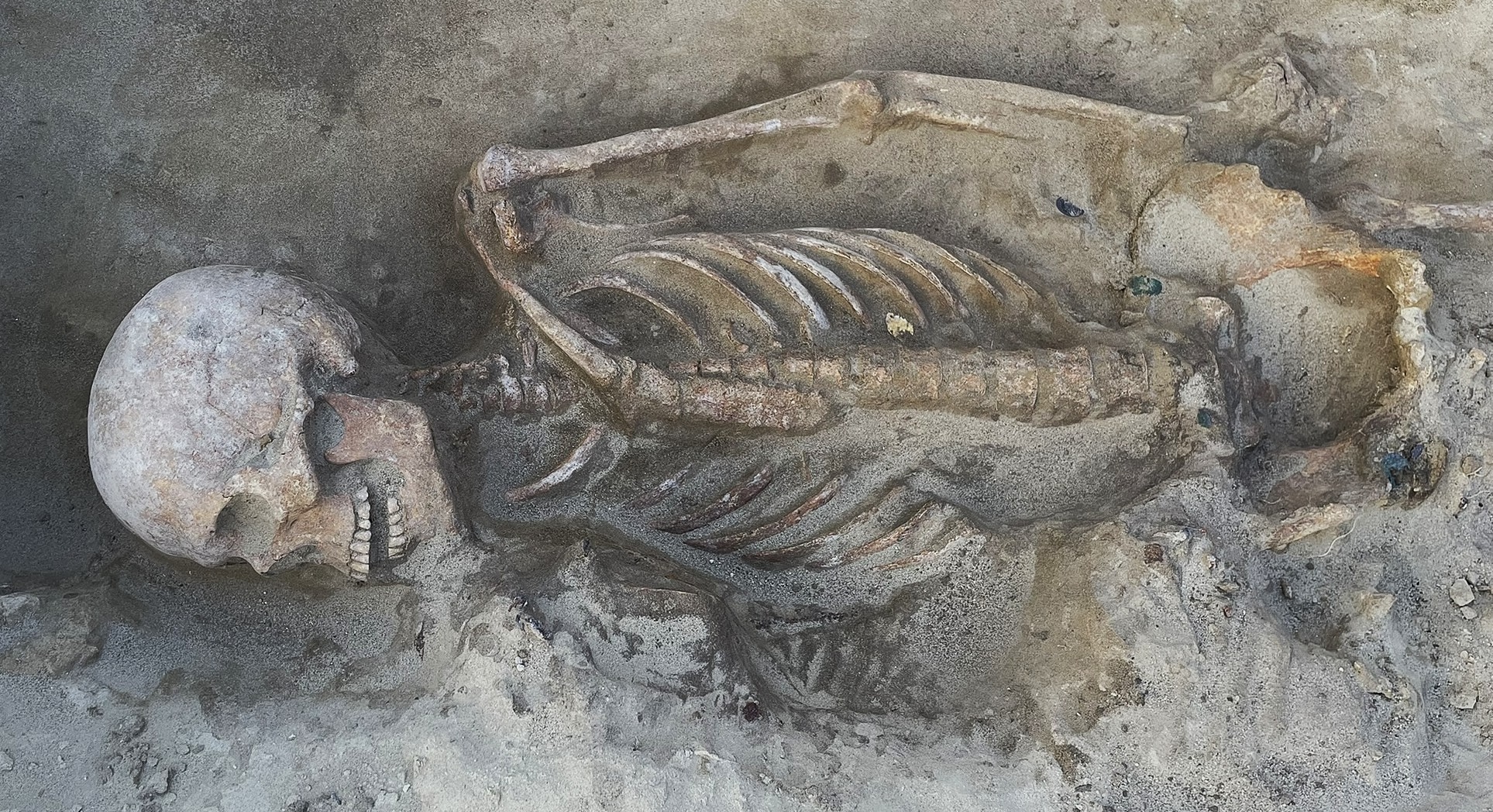Perfect trio of prehistoric atolls shine like tropical gems off Australian coast — Earth from space
This 2011 astronaut photo shows the atolls of Rowley Shoals lined up in a near-perfect line off the coast of Australia. The island trio was once part of an ancient barrier reef system that stretched over 1,200 miles.

Where is it? Rowley Shoals, Australia [-17.32117355, 119.26473330]
What's in the photo? From left to right; Imperieuse Reef, Clerke Reef and Mermaid Reef
Who took the photo? An unnamed astronaut on board the International Space Station
When was it taken? Oct. 18, 2011
This striking astronaut photo shows a unique chain of three atolls lined up side-by-side off the coast of Australia. The oval islands were once part of a colossal coral system that rivaled the Great Barrier Reef.
The trio of islands makes up Rowley Shoals, an uninhabited Australian territory located in the Timor Sea around 180 miles (290 kilometers) off the coast of Western Australia. From southwest to northeast (left to right), the islands are named Imperieuse Reef, Clerke Reef and Mermaid Reef.
The egg-shaped structures are all atolls — rings of land built from fringing coral reefs that once circled an island that has subsequently sunk beneath the waves. These atolls are evenly spaced out into a near-perfect straight line spanning roughly 60 miles (100 km) from end to end, according to NASA's Earth Observatory.
Each island has a surface area of around 30 square miles (80 square km). Only Imperieuse Reef and Clerke Reef have white sandy islets, or cays, that remain above water. Imperieuse Reef also has the only permanent human-made structure in Rowley Shoals — a lighthouse.
The atolls sit on one of the largest continental shelves on Earth. Around 10 million years ago, this area was home to a massive barrier reef system spanning more than 1,250 miles (2,000 km), which later fell into the sea due to tectonic subduction.
The atolls are believed to be some of the last remnants of this lost ecosystem, along with Ningaloo Reef, the Ashmore and Cartier Islands and the Scott and Seringapatam Reefs, according to a study published in February 2025.
Related: See all the best images of Earth from space
Get the world’s most fascinating discoveries delivered straight to your inbox.

The collective ecosystems of Rowley Shoals experienced a massive decline in the 1970s when the islands became popular with tourists and started hosting deep-sea fishing expeditions.
As a result, the area is now protected by two marine reserves: Rowley Shoals Marine Park, which contains Imperieuse Reef and Clerke Reef; and Mermaid Reef Marine Park, which protects Mermaid Reef and its surrounding waters. This has helped the respective ecosystems to recover to pre-tourism levels.
Today, the atolls are home to a wide variety of marine life, including sea turtles, reef sharks and giant clams, as well as around 900 other species of fish, mollusks and corals, according to the Atlas of Living Australia.
Rowley Shoals is currently listed as one of the best places to go scuba diving in Australia, outside of the Great Barrier Reef, according to the Professional Association of Diving Instructors (PADI). However, the atolls' diving season is limited to between September and December to help minimize the impacts of these visitors.

Harry is a U.K.-based senior staff writer at Live Science. He studied marine biology at the University of Exeter before training to become a journalist. He covers a wide range of topics including space exploration, planetary science, space weather, climate change, animal behavior and paleontology. His recent work on the solar maximum won "best space submission" at the 2024 Aerospace Media Awards and was shortlisted in the "top scoop" category at the NCTJ Awards for Excellence in 2023. He also writes Live Science's weekly Earth from space series.
You must confirm your public display name before commenting
Please logout and then login again, you will then be prompted to enter your display name.


